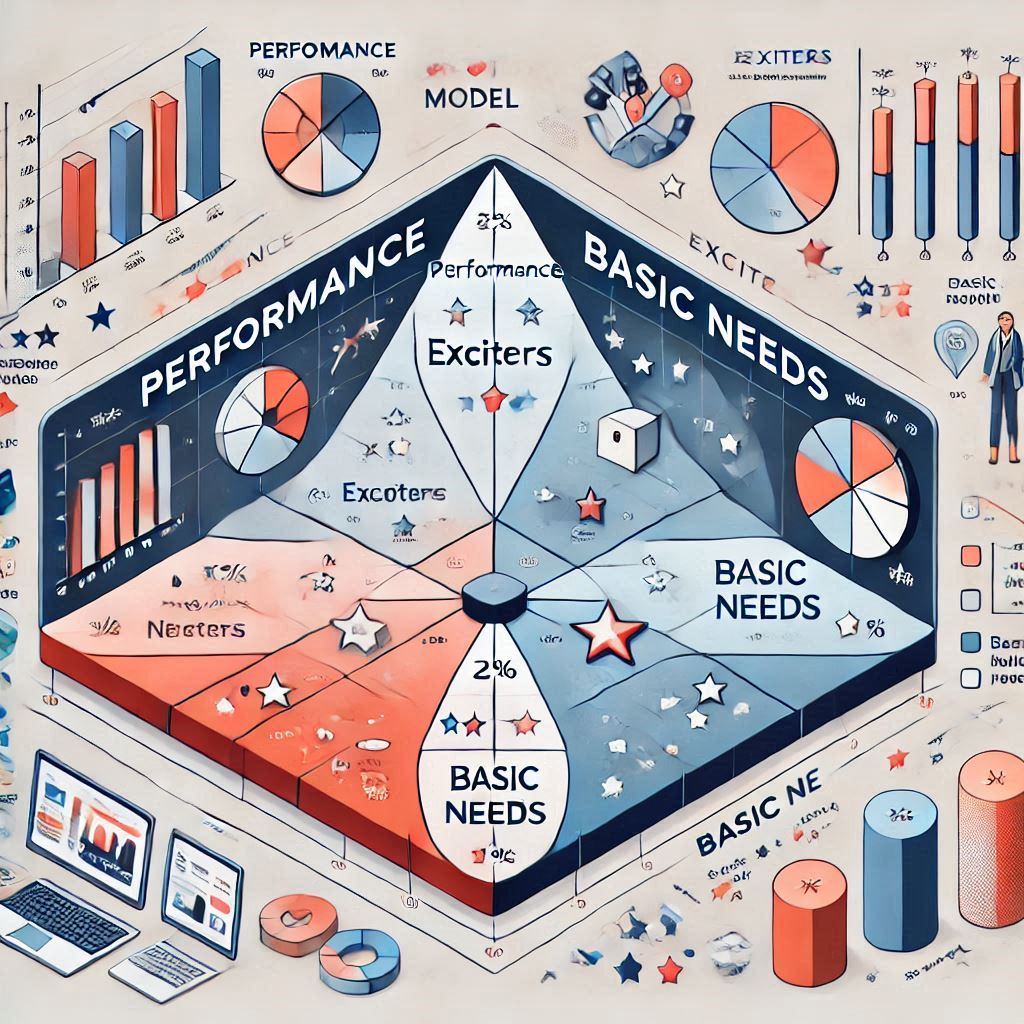-

The MoSCoW Method: A Comprehensive Guide to Prioritizing Features
Introduction In the ever-evolving world of product development, prioritization is a crucial task that can make or break the success of a project. With limited resources and a plethora of potential features, teams need a systematic approach to determine which features should be developed first. The MoSCoW Method is a popular and effective prioritization framework…
-

The Kano Model: A Comprehensive Guide to Product Management and Feature Prioritization
Overview: The Kano Model The Kano Model, developed by Professor Noriaki Kano in the 1980s, is a sophisticated framework used to prioritize product features based on their impact on customer satisfaction. The model is predicated on the belief that not all product features contribute equally to customer happiness. By categorizing features into distinct groups, the…
-

RICE (Reach, Impact, Confidence, Effort): A Comprehensive Framework for Prioritizing Features
Overview: The RICE Framework In the fast-paced world of product development, teams often face the challenge of deciding which features or products to develop next. With limited resources and numerous potential initiatives, making the right choices is critical to delivering value to customers and achieving business goals. The RICE framework—standing for Reach, Impact, Confidence, and…
-

SAFe (Scaled Agile Framework): Scaling Agile Practices Across Large Organizations
Overview: The SAFe Framework The Scaled Agile Framework (SAFe) is designed to help large organizations scale Agile practices across multiple teams, ensuring that Agile methodologies can be effectively applied at an enterprise level. SAFe integrates the principles of Lean and Agile to provide a comprehensive approach that enhances productivity, quality, and time-to-market. By implementing SAFe,…
-

Jobs to be Done (JTBD): Understanding Customer Needs Through the Lens of Their Jobs
Overview: The JTBD Framework Jobs to be Done (JTBD) is a powerful framework for understanding customer needs based on the jobs they want to accomplish. Developed by Clayton Christensen and his colleagues, the JTBD theory posits that customers “hire” products or services to help them complete specific tasks, achieve goals, or solve problems. Unlike traditional…
-

Design Thinking: A User-Centered Approach for Solving Complex Problems
Overview: The Design Thinking Methodology Design Thinking is a user-centered approach to problem-solving that focuses on understanding user needs, generating creative solutions, and testing these solutions through iterative processes. It is especially relevant in the software and SaaS (Software as a Service) industries, where user experience and rapid innovation are paramount. The methodology is structured…
-

Kanban: A Visual Management Method for Continuous Delivery
Overview: The Kanban Methodology Kanban is a visual management method used in project management and product development to ensure continuous delivery of work without overburdening the team. Originating from the Toyota Production System, Kanban emphasizes visualizing work, limiting work in progress (WIP), and managing the flow of tasks through the development process. The goal of…
-

Waterfall: A Linear and Sequential Approach to Project Management
Overview: The Waterfall Methodology Waterfall is a traditional project management methodology characterized by its linear and sequential approach. Each phase in the Waterfall model must be completed before the next one begins, making it a structured and orderly process. Developed in the manufacturing and construction industries, the Waterfall methodology was later adapted for software development.…
-

Lean: Maximizing Value and Minimizing Waste
Overview: Lean Methodology Lean methodology, rooted in Lean manufacturing principles, is a systematic approach to product development and project management that focuses on creating maximum value for customers while minimizing waste. Originating from the Toyota Production System, Lean principles have been widely adopted in various industries, including software development, to streamline processes, enhance efficiency, and…
-

Agile: An Iterative Approach to Product Development
Overview: Agile Methodology Agile is an iterative approach to product development and project management that prioritizes flexibility, collaboration, and customer feedback. Unlike traditional methodologies that follow a linear and sequential process, Agile embraces change and encourages adaptive planning, early delivery, and continuous improvement. The Agile methodology is designed to accommodate the dynamic nature of software…
